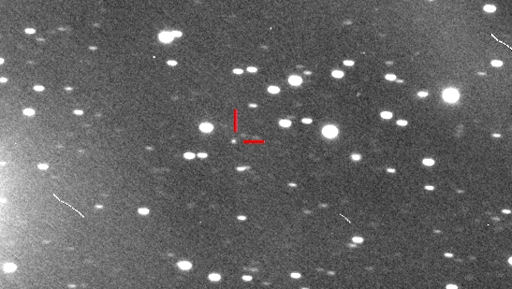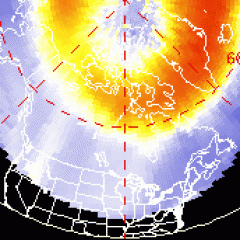BIG SUN-DIVING COMET DISCOVERED: Astronomy forums are buzzing with speculation about newly-discovered Comet C/2012 S1 (ISON). Currently located beyond the orbit of Jupiter, Comet ISON is heading for a very close encounter with the sun next year. In Nov. 2013, it will pass less than 0.012 AU (1.8 million km) from the solar surface. The fierce heating it experiences then could turn the comet into a bright naked-eye object. (continued below)

Comet ISON photographed by E. Guido, G. Sostero & N. Howes on Sept. 24. [more]
Much about this comet--and its ultimate fate--remains unknown. "At this stage we're just throwing darts at the board," says Karl Battams of the NASA-supported Sungrazer Comet Project, who lays out two possibilities:
"In the best case, the comet is big, bright, and skirts the sun next November. It would be extremely bright -- negative magnitudes maybe -- and naked-eye visible for observers in the Northern Hemisphere for at least a couple of months."
"Alternately, comets can and often do fizzle out! Comet Elenin springs to mind as a recent example, but there are more famous examples of comets that got the astronomy community seriously worked up, only to fizzle. This is quite possibly a 'new' comet coming in from the Oort cloud, meaning this could be its first-ever encounter with the Sun. If so, with all those icy volatiles intact and never having been truly stressed (thermally and gravitationally), the comet could well disrupt and dissipate weeks or months before reaching the sun."
"Either of the above scenarios is possible, as is anything in between," Battams says. "There's no doubt that Comet ISON will be closely watched. Because the comet is so far away, however, our knowledge probably won't develop much for at least a few more months."
Meanwhile, noted comet researcher John Bortle has pointed out a curious similarity between the orbit of Comet ISON and that of the Great Comet of 1680. "Purely as speculation," he says, "perhaps the two bodies could have been one a few revolutions ago."
Stay tuned for updates.

![]()
Solar wind
speed: 328.2 km/sec
density: 0.5 protons/cm3
explanation | more data
Updated: Today at 1507 UT
![]()
X-ray Solar Flares
6-hr max: C1 0943 UT Sep25
24-hr: C3 0435 UT Sep25
explanation | more data
Updated: Today at: 1459 UT
![]()
![]()
![]()
Daily Sun: 25 Sep 12
![]()
![]()
Sunspot 1575 poses a slight threat for M-class solar flares. Credit: SDO/HMI
![]()
![]()
![]()
Sunspot number: 90
What is the sunspot number?
Updated 25 Sep 2012
Spotless Days
Current Stretch: 0 days
2012 total: 0 days (0%)
2011 total: 2 days (<1%)
2010 total: 51 days (14%)
2009 total: 260 days (71%)
Since 2004: 821 days
Typical Solar Min: 486 days
Update 25 Sep 2012
The Radio Sun
10.7 cm flux: 137 sfu
explanation | more data
Updated 25 Sep 2012
![]()
![]()
![]()
Current Auroral Oval:
![]()
Switch to: Europe, USA, New Zealand, Antarctica
Credit: NOAA/POES
![]()
![]()
![]()
Planetary K-index
Now: Kp= 1 quiet
24-hr max: Kp= 1 quiet
explanation | more data
![]()
Interplanetary Mag. Field
Btotal: 3.4 nT
Bz: 0.5 nT north
explanation | more data
Updated: Today at 1506 UT
![]()
![]()
![]()
Coronal Holes: 25 Sep 12
![]()
![]()
There are no large coronal holes on the Earth side of the sun. Credit: SDO/AIA.




